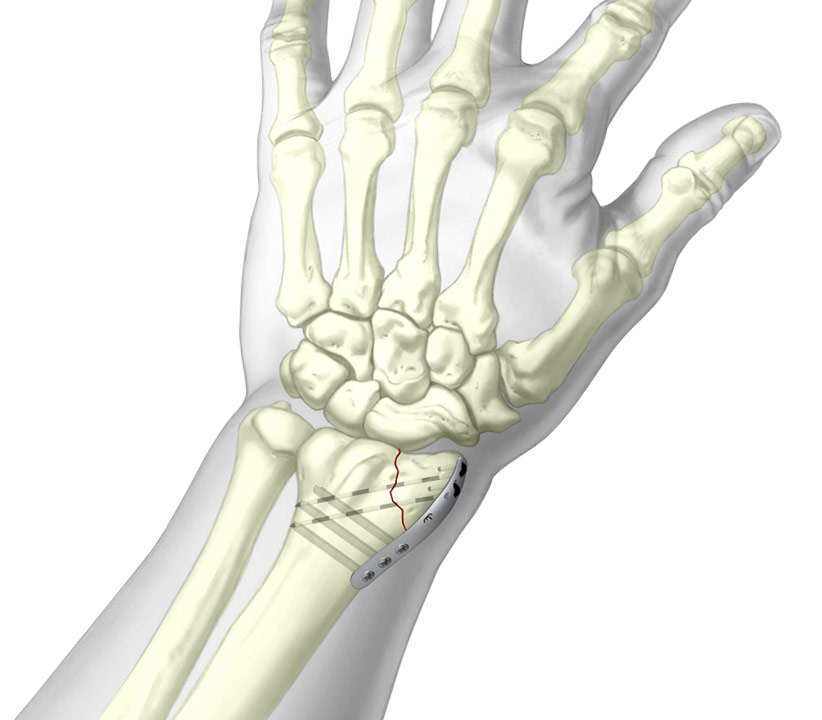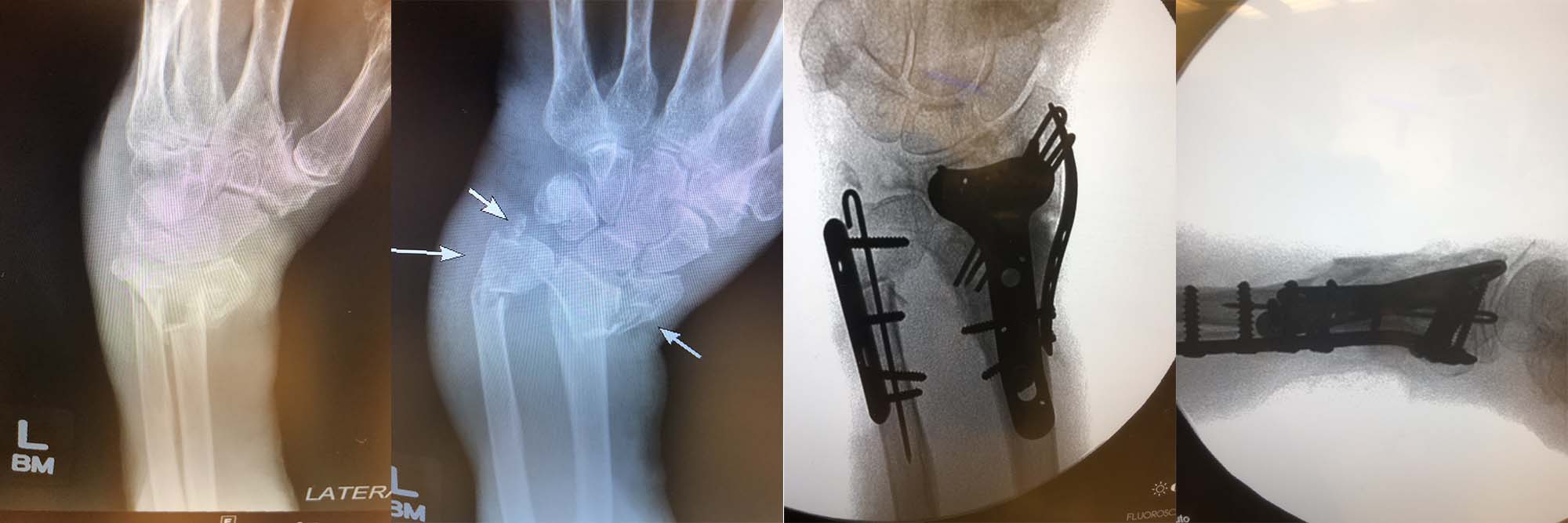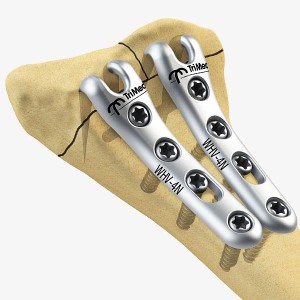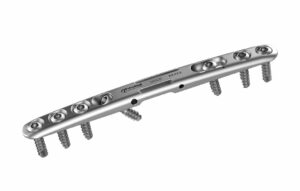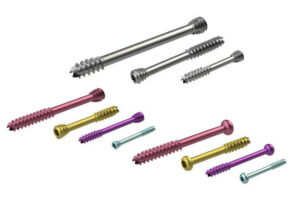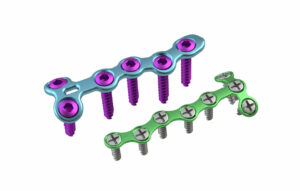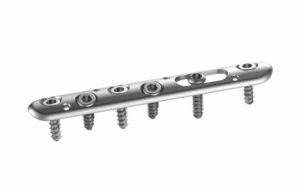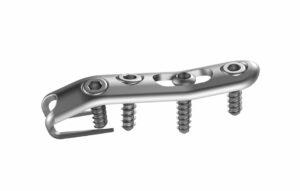“I use a volar incision but make the skin incision go from the distal pole of the scaphoidi to the radial edge of the radial wrist crease and then curve back along the course of the FCR tendon. I do the volar exposure for the radius in the std fashion with this skin incision, but to get to the radial styloid I lift a sub flap radially, superficial to the radial artery, and then in the plane just along the surface of the 1st dorsal compartment.” – Rob Medoff, MD
“I use a limited volar approach to the radial column – longitudinal incision along the radial border of the radial artery and then lift the subQ flap off the surface of the 1st dorsal compartment to get to the radial styloid. A separate dorsal approach; this usually can be fairly limited since the skin is very mobile. You could also make a longer dorsal incision and reflect a radial subQ flap to get the radial column (in this case you supinate the forearm rather than pronate the forearm as with the volar approach to deliver the tip of the styloid into the wound to visualize it).” – Rob Medoff, MD

